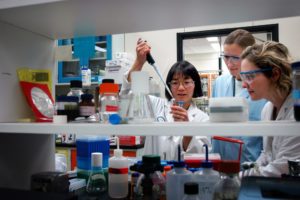This is a guest post from Edward Simpson, a seasoned calibration and technical engineer. Do you have a response to Edward’s post? Respond in the comments section below.
Process validation is a crucial component of cGMP (current Good Manufacturing Practice) in industries concerned with public health and safety, such as pharma, bio-pharma and biotech. 
What is Process Validation?
According to the FDA, process validation refers to “establishing documented evidence which provides a high degree of assurance that a specific process will consistently produce a product meeting its predetermined specifications and quality attributes”.
In simpler terms, it’s a set of product- and process-specific studies conducted to ensure that products regularly meet promised specifications for quality, strength, identity, potency and purity. It’s part of the VMP (Validation Master Plan), which also includes other elements like equipment validation, facility validation, analytical validation, etc.
Key Objectives of Undertaking Process Validation
- Understanding how product characteristics affect quality, efficacy and safety
- Implementing a lifecycle approach, which ensures consistency and reduces risk
- Ensuring the manufacturing process is controlled throughout the product lifecycle
- Allowing a scientific and rational approach to complex biotech product design
Types of Process Validation: A Brief Overview
- Prospective Validation – This is conducted during product development, after breaking down the production process into separate steps. Each of these is then evaluated to determine whether it could cause a critical situation or affect finished product quality, based on historical experience or evidence.
- Concurrent Validation – This is conducted during normal production, throughout the lifecycle of a product. It’s especially critical to comprehensively monitor the first three production batches in qualification runs. These results help determine the nature and conditions of following tests for in-process and final batches.
- Retrospective Validation – This is conducted to provide documented evidence of a process being unchanged/under control, before such evidence is requested. Since it’s based on historical data and past experience, it does not contribute to quality assurance, but is used to determine validation priorities instead.
- Revalidation – Repeating the validation procedure (or part of it) helps make sure that product quality and process characteristics are not negatively affected by intentional or unintentional changes. Periodic revalidation is typically conducted:
- After any change in manufacturing processes and/or SOPs (standard operating procedures), which may affect established product quality and performance characteristics.
- At regularly scheduled intervals (based on an evaluation of historical data or additional testing), to verify that the process is under control even if there have been no deliberate changes.
Biopharma and Biotech Process Validation Stages
As per the FDA’s guidance document for pharmaceutical validation programs, process validation activities can be classified into three distinct stages:
- Stage 1 – Process Design
In this stage, the process knowledge and understanding collected through development and scale-up activities is used to define the commercial manufacturing process.
- Stage 2 – Process Qualification
This stage deals with the evaluation of process design, facility and equipment to confirm whether the commercial manufacturing process is reproducible.
- Stage 3 – Continued Process Verification
The data gathered during normal production is tracked and analyzed during this stage, to determine the state of control of the manufacturing processes.
While these stages have been defined individually, certain activities (e.g. Trace Matrices and Risk Assessments) may overlap or occur in more than one stage.
Where is Process Validation Applicable?
The complexity of process validation for biotech manufacturing depends on the product and production step being tested. However, the process is usually more complex than similar activities for traditional drugs (synthetic or natural).
There are three basic areas of concern:
- Risk Factors – Effective process design reduces risk factors to acceptable levels, so the validation process starts by addressing these. They can be broadly classified under:
- Raw materials and product sources, which pose known or unknown threats. Examples include bacteria, yeast, gene therapy vectors, transgenic animals or plants, mammalian cells, insect cells, etc.
- Risks from processing, which could range from variability in processing materials or cell culture to proteolytic degradation and contaminant buildup. These could all affect product quality during production.
- Analytical Tools – The analytical methods and tools (providing information that’s used to understand and control the biotech process) must also be validated, before validation of the product and process. Examples include mass spectrometry, peptide mapping and bioassays (the last being the most crucial).
- Unit Operations – Validation concerns are often found in unit operations employed in the biotech process, and these must be validated within a predetermined time frame. Typical unit operation steps include Cell Culture, Isolation and Recovery, and Downstream Purification.
Calibration plays an important role in process validation, and is another specific cGMP compliance requirement for biopharma and biotech. For instance, every instrument used in validation and production needs to be properly calibrated and referenced to NIST (National Institute of Standards and Technology) traceable standards. Get in touch with an accredited calibration lab to discuss your calibration, validation and compliance needs.
Author Bio:
Edward Simpson is a seasoned Calibration and Technical Engineer working for RS Calibration Inc. Edward has a knack for finding faults in machines and does not rest until they are rectified to perfection. He lives in Pleasanton, CA and can be contacted anytime for matters related to machines on his email [email protected]. He also invites people to visit his company www.rscal.com to learn more about the type of calibration work he does.